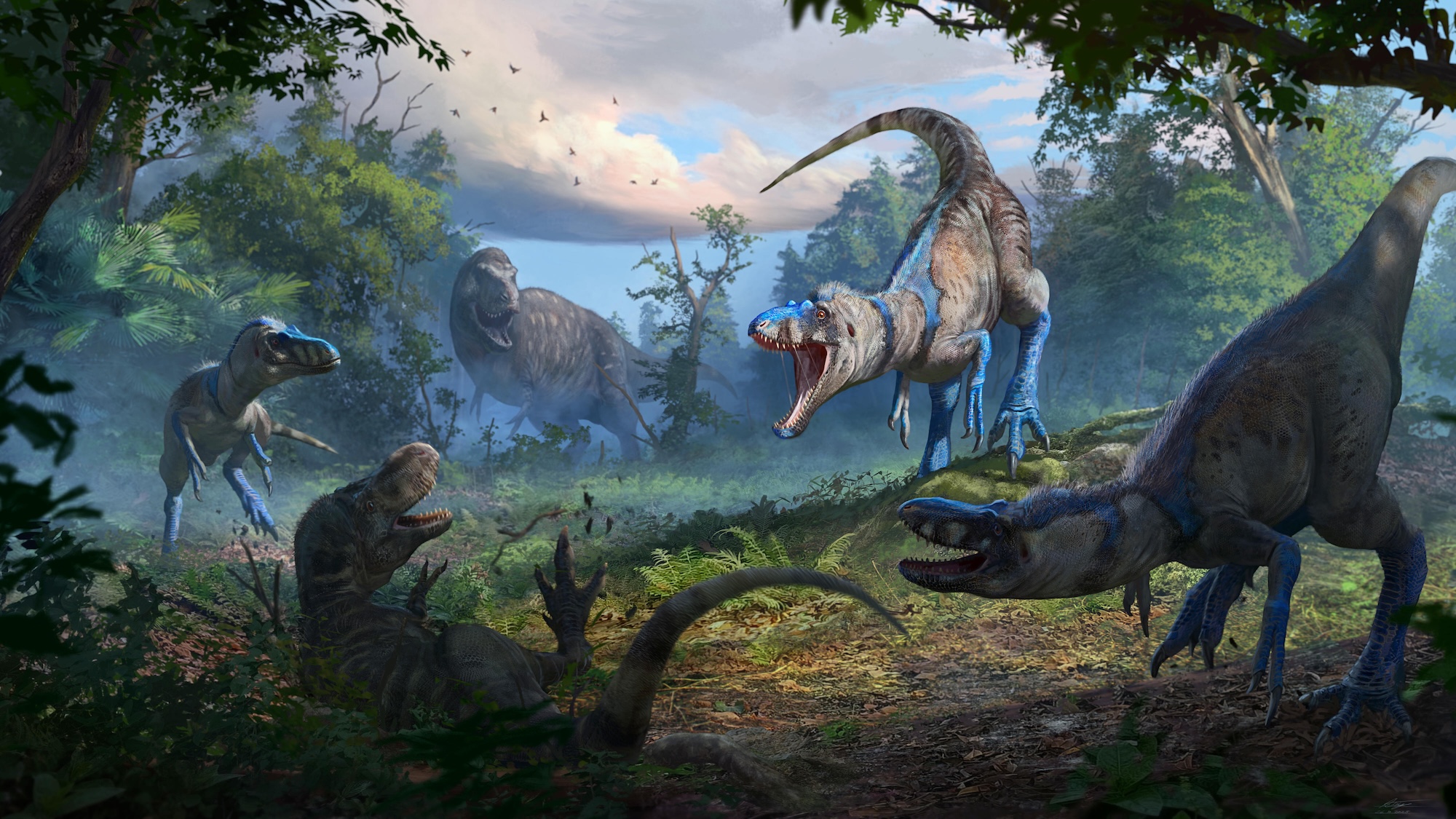Science
Tiny Tyrannosaur Fossil Reveals New Species of Cretaceous Predator

Paleontologists have confirmed the existence of a new species of dinosaur, revealing that a smaller relative of the Tyrannosaurus rex once roamed North America. Researchers from North Carolina State University and Ohio University published their findings in the scientific journal Nature on October 30, 2023, establishing that the fossils previously attributed to juvenile T. rex belong to an entirely separate species known as Nanotyrannus lancensis.
The debate over the classification of these fossils stretches back several decades, primarily focusing on a small skull discovered in 1946 at the Hell Creek Formation in Montana. Initially classified as a species of Gorgosaurus, the skull has sparked contention among paleontologists, with some arguing that it belonged to a young T. rex due to its size and characteristics. This disagreement has fueled ongoing discussions regarding dinosaur diversity during the late Cretaceous period.
The new study, led by paleontologists Lindsay Zanno and Lawrence Witmer, aims to settle this long-standing dispute. During a recent expedition to the Hell Creek Formation, their team unearthed an “exceptionally preserved” skeleton of a tyrannosauroid. Analysis of this approximately 67-million-year-old specimen, along with the earlier skull, led the researchers to conclude that both belonged to Nanotyrannus.
A significant factor in their conclusion was the age of the newly discovered specimen. The morphological analysis indicated that the bones were nearly fully grown, which suggests that they were not juvenile remains. The study also revealed that Nanotyrannus exhibited distinct bone growth patterns compared to T. rex, further reinforcing its classification as a separate species.
Distinct Characteristics of Nanotyrannus
The Nanotyrannus species is notably smaller than its larger counterpart. An adult Nanotyrannus could reach lengths of approximately 18 feet and weigh around 1,550 pounds, while adult T. rex could exceed 42 feet in length and weigh over 9 tons. Unlike T. rex, which evolved for brute strength with a powerful bite, Nanotyrannus possessed longer legs and strong arms, allowing it to be agile and fast, ideal for ambushing prey.
The discovery of Nanotyrannus suggests that T. rex had a smaller companion as they coexisted for at least one million years leading up to the Cretaceous-Paleogene extinction event. This finding supports the idea that dinosaurs were thriving rather than declining before their mass extinction.
“Our results undermine a nearly uniform consensus among theropod specialists and rectify a significant taxonomic error underpinning decades of research,” Zanno and Witmer stated in the study. The impact of this discovery extends beyond mere classification, potentially reshaping our understanding of dinosaur ecosystems and their diversity during the late Cretaceous.
The confirmation of a new species such as Nanotyrannus lancensis not only contributes to the scientific community’s knowledge of dinosaur evolution but also highlights the importance of ongoing research in paleontology. As more fossils are examined and new technologies are applied, the understanding of ancient life continues to evolve, revealing a richer tapestry of prehistoric existence than previously imagined.
-

 Science2 weeks ago
Science2 weeks agoIROS 2025 to Showcase Cutting-Edge Robotics Innovations in China
-

 Politics2 weeks ago
Politics2 weeks agoJudge Considers Dismissal of Chelsea Housing Case Citing AI Flaws
-

 World2 weeks ago
World2 weeks agoBravo Company Veterans Honored with Bronze Medals After 56 Years
-

 Lifestyle2 weeks ago
Lifestyle2 weeks agoStone Island’s Logo Worn by Extremists Sparks Brand Dilemma
-

 Health2 weeks ago
Health2 weeks agoStartup Liberate Bio Secures $31 Million for Next-Gen Therapies
-

 Health2 weeks ago
Health2 weeks agoTop Hyaluronic Acid Serums for Radiant Skin in 2025
-

 Top Stories2 weeks ago
Top Stories2 weeks agoIndonesia Suspends 27,000 Bank Accounts in Online Gambling Crackdown
-

 World2 weeks ago
World2 weeks agoHoneywell Predicts Record Demand for Business Jets Over Next Decade
-

 Sports2 weeks ago
Sports2 weeks agoMel Kiper Jr. Reveals Top 25 Prospects for 2026 NFL Draft
-

 Lifestyle2 weeks ago
Lifestyle2 weeks agoMary Morgan Jackson Crowned Little Miss National Peanut Festival 2025
-

 Sports2 weeks ago
Sports2 weeks agoYamamoto’s Mastery Leads Dodgers to 5-1 Victory in NLCS Game 2
-

 Politics2 weeks ago
Politics2 weeks agoNew Jersey Voters Urged to Register Ahead of November Election









